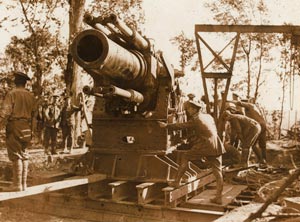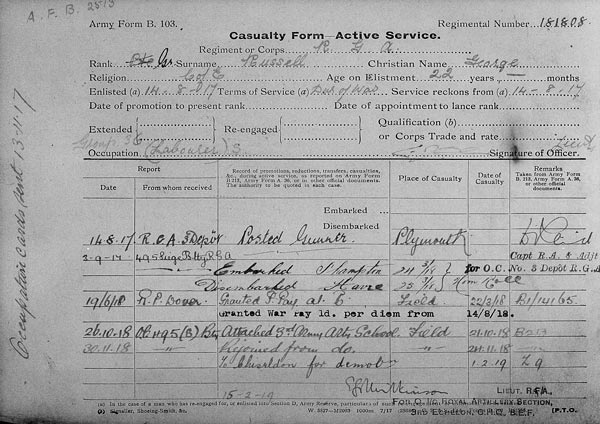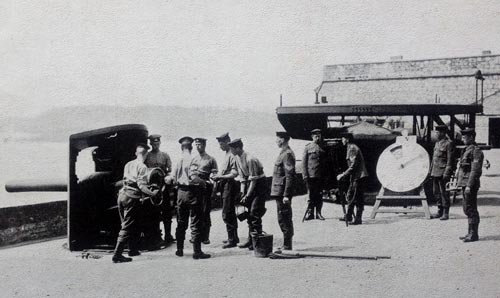Private
 |
| R.G.A Howitzer 1916 |
Gunner
George Russell
Service Number:
181808
Regiment & Unit/Battalion
Regiment Royal Garrison Artillery
495th Siege Battery Woolwich
N0. 3 Depot R.G.A.
17-8-1917
Date of Death
Buried or commemorated at
Broadwas Roll of Honour
Country of Service
United Kingdom
Additional Info
Son of Mr. and Mrs. George & Louisa Russell
Family history
George Russell [Snr] married Louisa Neathway 1st qtr., 1894
[Martley district]
In the 1911 census the family is living in Broadwas thier son
George Russell is aged 13,
[He was born, 23rd November
1984, so he should be 16] occupation, farm labourer. He had two sisters, Louisa Jane Russell, aged 11, and
Frances Russell, aged 6.
[They
had two other children but they are not on this census]
George Russell enlisted on the 14th August 1917 for duration of war, his age was 22, his height was given as 5ft 9in,
and his mother's name was given as next of kin. Firstly in the Army Service Corps and then in the Royal Garrison Artillery.
George served at *Plymouth

George Russell may have married Nellie Russell, 2nd qtr., 1928,
[Worcester district] If so she died 1st qtr., 1931 aged 35
[Worcester district].
In the 1939 Register
George is a widower living at Noxens Farm, Broad Green, Worcestershire; where he is Head
Cowman.
He lives there with Emily L. Penlington a widow, born 28th July 1880.
The emerging need for air defence of the United Kingdom was discussed between the Admiralty and the War Office prior
to the outbreak of the First World War. In August 1914 the responsibility was still split, with the Royal Garrison Artillery
employing 30 officers and 312 men on air defence duties. By February 1916 the army had entire responsibility for the
air defence of the United Kingdom. In May 1916, 56 companies of the RGA were created to command the guns.
By November 1917, 639 officers and 8,436 men of the RGA were manning anti-aircraft defences, as well as 4,309 men
of the Royal Engineers and 424 men of the Army Service Corps (ASC).

R.G.A. Loading a 5in Gun. The Citadel, *Plymouth.
The Royal Garrison Artillery
At the end of the 19th century the Royal Garrison Artillery, which was part of the Royal Artillery, was divided into 3 Divisions;
The Eastern Division, HQ at Dover. Depot companies at Dover and Great Yarmouth.
The Southern Division, HQ at Portsmouth. Depot companies at Gosport and Seaforth (near Liverpool).
The Western Division, HQ at Devonport. Depot companies at *Plymouth and Scarborough.
The Garrison Artillery was composed of 104 service companies in 1900, forty of them in the UK, 37 in various colonies of
the Empire and 27 in India. A company was commanded by a major with 6 or so officers,
around 10 NCOs and 100 to 200 men.
The uniform of Garrison Artillery was the same as Field Artillery except that they were more likely to wear trousers
instead of boots and breeches. On their shoulder straps were the initials of the name of their Division
and the number of their company.
The RGA developed from fortress-based artillery located on British coasts. From 1914 when the army possessed very
little heavy artillery it grew into a very large component of the British forces. It was armed with heavy, large calibre
guns and howitzers that were positioned some way behind the front line and had immense destructive power.
Return
©peh




